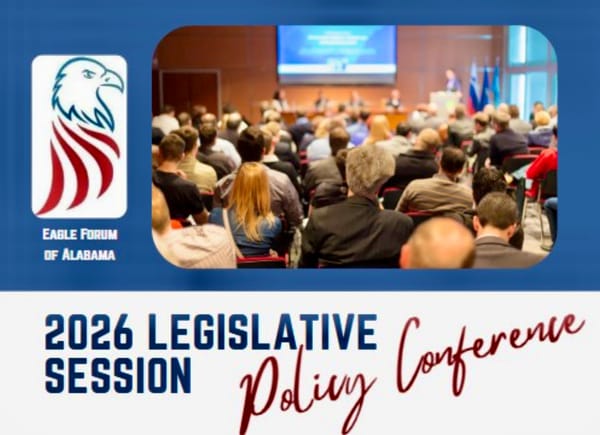Trump Pushes to End Obamacare Subsidies, Fund People Directly
Urges Republicans to redirect billions from insurers to consumers for real choice in care (and end the filibuster)

A central feature of the government shutdown has been Senate Democrat’s insistence on extending the temporary expansion of Affordable Care Act (ACA, aka Obamacare) subsidies, begun under the American Rescue Plan Act and later extended by the Inflation Reduction Act. Both of these Biden-sponsored, pandemic-era measures vastly increased access to Obamacare plans, while greatly lowering the cost of those plans. Senate Republicans have been willing to allow these temporary subsidies to lapse, while some Democrats want to make them permanent—at a ten-year cost of some $488 billion dollars.
On Saturday, President Trump pushed a new plan to replace Obamacare on Truth Social, saying:
“I am recommending to Senate Republicans that the Hundreds of Billions of Dollars currently being sent to money sucking Insurance Companies in order to save the bad Healthcare provided by ObamaCare, BE SENT DIRECTLY TO THE PEOPLE SO THAT THEY CAN PURCHASE THEIR OWN, MUCH BETTER, HEALTHCARE, and have money left over. In other words, take from the BIG, BAD Insurance Companies, give it to the people, and terminate, per Dollar spent, the worst Healthcare anywhere in the World, ObamaCare. Unrelated, we must still terminate the Filibuster!”
The debate over federal health‐care subsidies under Obamacare has taken on fresh urgency in light of the ongoing government shutdown. With the President’s bold suggestion, some conservative leaders are calling not just to let the temporary enhancements expire, but to overhaul the system entirely and shift the funding directly to individuals.
In other words, the President’s post would actually be a significant step towards the repeal and replacement of Obamacare—as Republicans have been promising to do for fifteen years.
This is more than just an academic or political debate for many in Alabama. According to federal data, nearly 477,838 Alabamians selected an ACA Marketplace plan through HealthCare.gov for 2025. In January 2025, a record 465,463 Alabamians were enrolled in Marketplace plans—a 20% jump over the prior year. Of those, the majority received “enhanced” premium tax credits introduced under the 2021 relief law.
Some observers warn of sharp consequences ahead. A November 2025 analysis by the Kaiser Family Foundation (KFF) estimated that if those enhanced credits are not extended, Alabama premiums could increase by 114 % on average—with some individuals facing hikes of nearly 10 fold.
Policy groups and conservative lawmakers offer several arguments against extending the enhanced subsidies:
- Cost to taxpayers and insurers. The enhanced subsidies have added tens of billions to federal spending while delivering generous support to many enrollees. Critics argue that much of that money ends up cushioning insurance-company profits rather than driving real value for patients.
- Poor targeting. Many subsidies flow to households who might already afford coverage or who do not benefit in the way intended.
- Market distortion. When the government insulates premiums from market forces, insurers face less pressure to compete on cost or broaden access—potentially leaving consumers with fewer choices long term.
On the other hand, there is the practical fallout of allowing the subsidies to expire: huge premiums, shrinking choices, and vulnerable households being squeezed. In Alabama, where 9–10% of the population relies on Marketplace plans, the risk of unaffordable coverage is real.
“The enhanced premium tax credits…made those plans more affordable or at no charge for those who qualify,” noted one observer. If those supports vanish, policy insiders warn many will either pay far more or drop coverage entirely.
The post from the President has drawn fresh attention to a more transformative vision: redirect the billions the government currently sends to insurers, and instead hand dollars directly to individuals so they can shop for their own coverage. That sort of “consumer-choice” model is appealing to many because it promises:
- Portable benefits that follow the individual rather than an employer.
- Expanded health savings accounts (HSAs) and tax-credit models.
- More competition across state lines and fewer federal mandates.
But implementation of such a significant reform would be complex. Any replacement system must protect people with pre-existing conditions, ensure network access, avoid destabilizing markets, and build new infrastructure. It also faces opposition from the Left, as it represents a step away from one of their most significant pieces of legislation.
For Congress, the choice is immediate and political. Should they vote to extend the enhanced subsidies, shielding many consumers from premium shock? Or let them expire and push for a broader reform vision—accepting short-term pain for long-term transformation? Either path carries risks, especially in an election year—which may have been a primary motivation for the Democrats in the first place.
Premium filings in Alabama already reflect the tension: insurers request rate hikes of 19% to 29% for 2026 unless the subsidies continue. Meanwhile, State coverage officials note that enrollment through the Marketplace remains the major avenue for people buying outside employer or Medicaid plans.
In Alabama, the debate is not abstract—it affects real families at kitchen tables, small-business owners, and the self-employed. Redirecting funds from insurers to individuals, as proposed in the social-post message, offers a bold vision of reform. But the near-term risk of premium spikes and coverage loss looms large if subsidies vanish first and reforms lag.
Assuming the just-proposed Senate deal passes, Congress will have several months to debate the issue of Obamacare subsidies before casting votes that will have real impact on hundreds of thousands of Alabama voters. Will the House and Senate choose the politically-safe, budget-busting path of extending the subsidies yet again? Or will they take the initially-difficult step towards decreasing costs and increasing personal choice and control in healthcare?
And don’t forget: next year’s elections are less than a year away….




